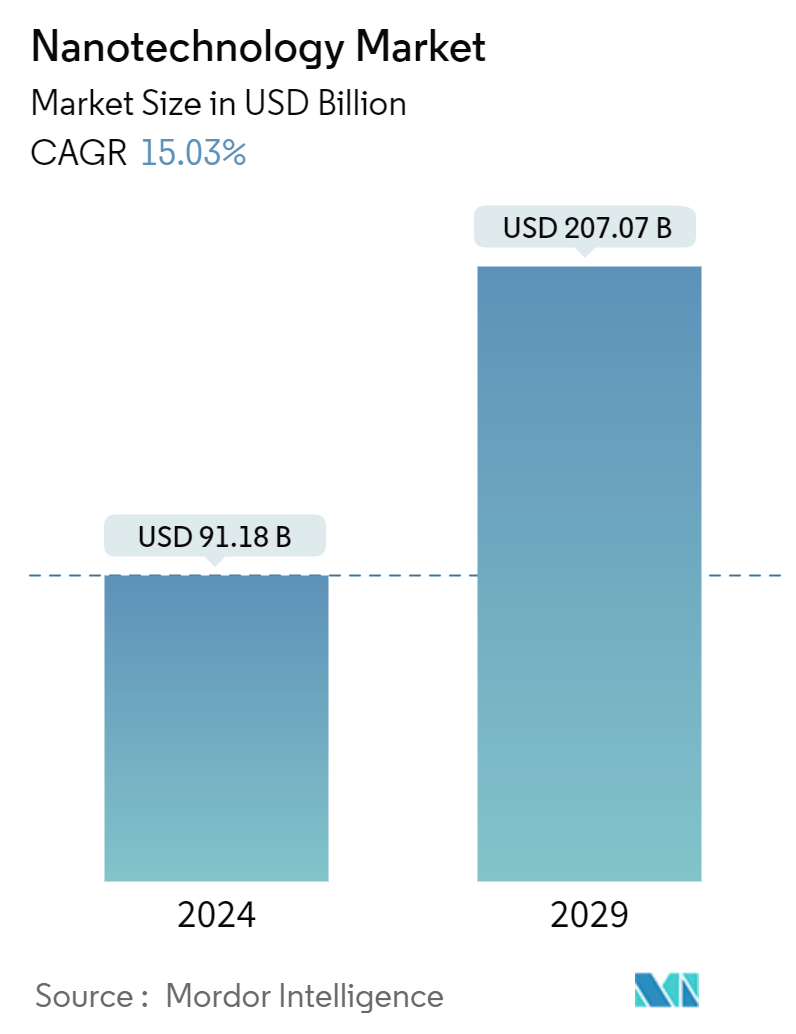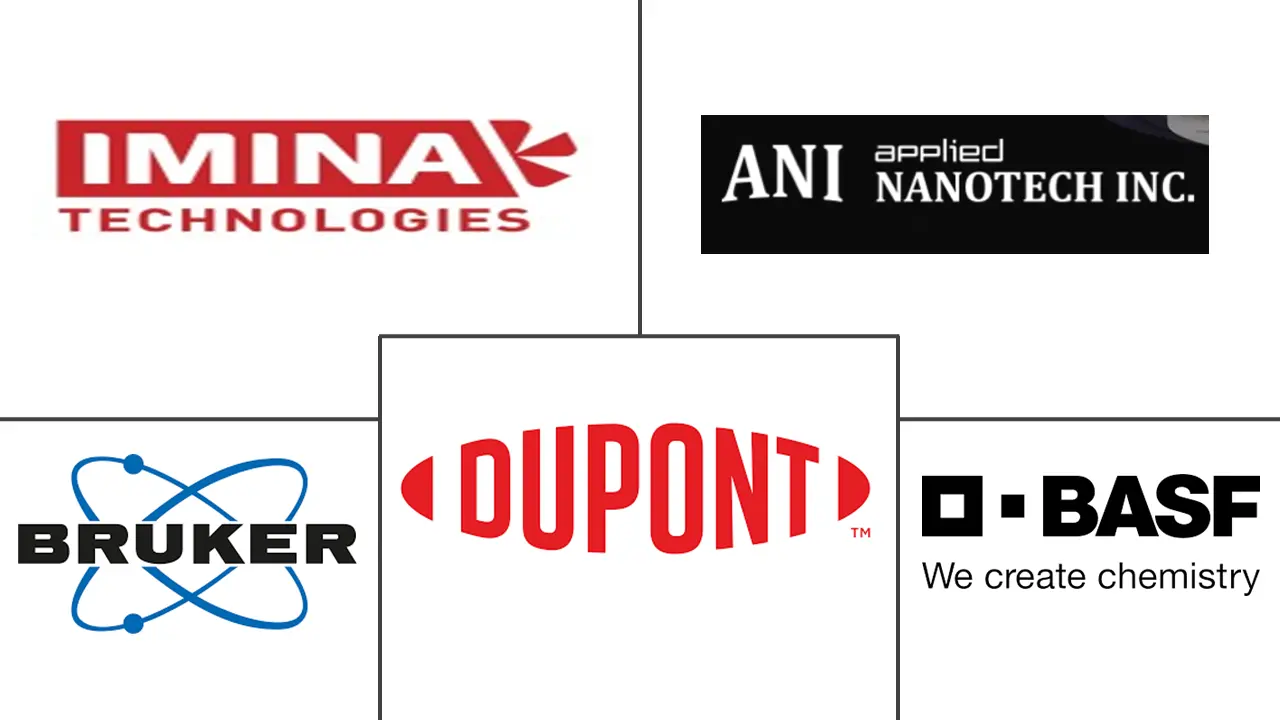Market Size of Nanotechnology Industry

| Study Period | 2019 - 2029 |
| Market Size (2024) | USD 91.18 Billion |
| Market Size (2029) | USD 207.07 Billion |
| CAGR (2024 - 2029) | 15.03 % |
| Fastest Growing Market | Asia Pacific |
| Largest Market | North America |
| Market Concentration | Low |
Major Players
*Disclaimer: Major Players sorted in no particular order |
Nanotechnology Market Analysis
The Nanotechnology Market size is estimated at USD 91.18 billion in 2024, and is expected to reach USD 207.07 billion by 2029, growing at a CAGR of 15.03% during the forecast period (2024-2029).
- Nanotechnology constructs intricate structures at the molecular or atomic level, enabling the production of superior-quality goods at lower costs. This advanced technology finds applications across various industrial sectors. The rising integration of nanotechnology in the medical field, coupled with a trend toward miniaturization in sectors like electronics, textiles, and aerospace, is poised to propel the market's growth in the coming years.
- Nanomaterials, encompassing nanoparticles, nanofibers, and nanotubes, possess distinct properties that can significantly enhance the delivery and efficacy of pharmaceutical drugs. These materials improve drug solubility, stability, and targeted delivery, increasing bioavailability and therapeutic outcomes. By encapsulating and safeguarding sensitive drugs within nanocarriers, nanomaterials address numerous challenges associated with conventional drug delivery methods.
- Engineered nanomaterials can precisely target specific cells, tissues, or organs, amplifying the drug's effectiveness while minimizing side effects. Additionally, nanoparticles can be programmed for controlled drug release, ensuring therapeutic agents are delivered precisely where and when needed. This approach is particularly advantageous for treating cancer, cardiovascular disorders, and neurological conditions.
- Further, recent advancements in nanofabrication techniques, including lithography, self-assembly, and bottom-up methods, have enhanced the ability to construct and manipulate nanoscale structures precisely. Improved characterization tools, such as scanning probe microscopy, electron microscopy, and various spectroscopic techniques, have deepened the understanding and analysis of nanomaterials and their properties. These technological advancements in nanofabrication and characterization have accelerated the development and optimization of nano-enabled products and applications.
- Extensive research and development efforts are essential for creating new nanomaterials, nanodevices, and nano-enabled applications. However, the journey is fraught with challenges: the specialized equipment, advanced instrumentation, and the expertise of highly skilled personnel come at a steep price. Coupled with the intricate and iterative nature of nanotechnology research, which demands rigorous testing and validation, these factors lead to substantial R&D expenditures.
- The realm of nanotechnology, be it in research, development, or production, mandates a specialized infrastructure. This includes advanced characterization tools, sophisticated imaging systems, and meticulously controlled environments. The costs escalate with the maintenance and necessary upgrades of these specialized instruments and facilities. Moreover, the expertise of highly skilled personnel, essential for operating and maintaining these advanced systems, further amplifies the financial commitment.

